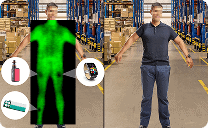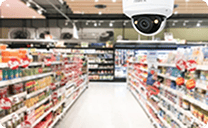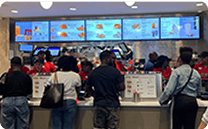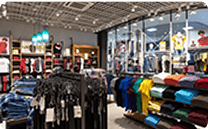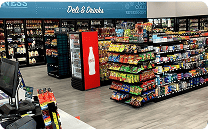In This article
Dwell time is a key behavioral metric in physical retail environments, measuring how long a customer remains in a specific location, such as an aisle, display, or service counter. It provides valuable insight into how visitors interact with store layouts, merchandise, and promotions.
Unlike overall visit duration, which tracks how long someone stays in a store, dwell time zeroes in on customer attention at a micro level. This allows businesses to assess whether certain zones capture interest, where bottlenecks or delays occur, and how long customers engage with staff or products.
The dwell time metric is increasingly used alongside traffic counting, video analytics, and point-of-sale data (POS) to drive layout improvements, staffing decisions, and marketing strategies.
How Dwell Time is Measured
Dwell time is measured using a combination of technologies:
- Video surveillance with analytics: AI-enabled cameras can detect and determine how long individuals remain in a specific field of view.
- Infrared sensors or pressure mats capture motion or footfall duration in a defined zone.
- Wi-Fi or Bluetooth tracking: Mobile devices can be tracked to measure how long a person remains in range.
- RFID or smart shelf sensors: Used in retail and warehouse environments to track product handling or engagement times.
The collected data can be analyzed by zone, time of day, or customer type to reveal patterns and trends.
Why Dwell Time Matters
Dwell time provides both operational and strategic insights. A longer dwell time in key product areas can signal interest and buying intent, while unusually short dwell times may indicate confusion, poor presentation, or lack of interest.
For example, if customers spend significant time in the beverage cooler area but conversion rates remain low, there may be pricing or accessibility issues worth investigating. On the other hand, high dwell times in high-margin departments may correlate with better sales performance.
The data is also used to:
- Evaluate the effectiveness of endcap displays, signage, or promotional zones.
- Optimize store layouts by encouraging flow to underutilized areas.
- Identify where customer assistance is needed based on prolonged hesitation.
- Inform decisions about digital signage placement or in-store messaging.
Use Cases Across Industries
While retail is the most common setting for dwell time analysis, the metric is also valuable in:
- Quick-service restaurants (QSRs): Speed of Service from monitoring time spent in pickup zones or ordering lines.
- C-stores and fuel stations: Measuring engagement with promotional displays or food/beverage sections.
- Banking and financial institutions: Observing dwell time at ATMs or service counters.
- Healthcare and clinics: Managing wait times in check-in and service areas.
- Hospitality and entertainment venues: Tracking foot traffic around check-in areas, bars, or exhibits.
In any space where foot traffic and customer engagement are a priority, analytics help identify opportunities to improve the layout, service, and overall experience.
Turning Insights into Action with DTiQ
The DTiQ 360iQ platform combines video analytics and behavioral data to track dwell time across critical zones in your business. From promotional displays to service counters, the platform reveals where customers spend their time—and why. These insights can help improve store layout decisions, strengthen customer engagement, and support better operational planning across all your locations. Contact us to learn more.
